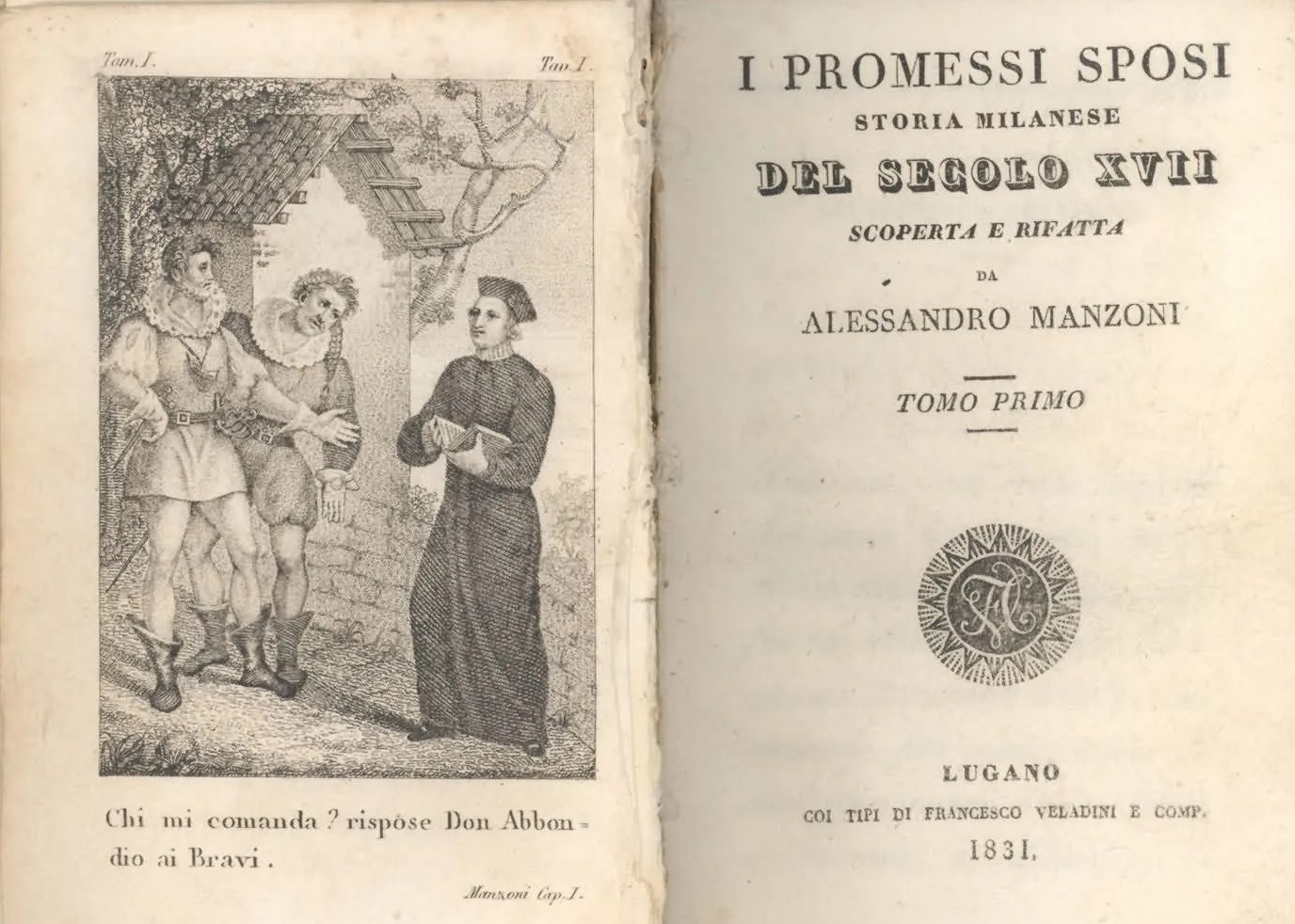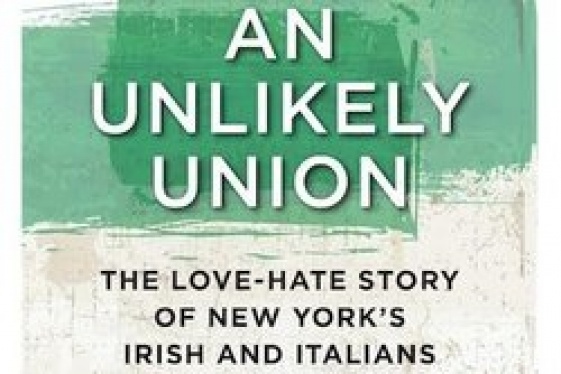

The column keeps exploring some of the masterpieces produced by Italian literature and this one is no exception as – like the ones before – has laid the foundation for our culture, history, and language. It continues to be studied in schools and to be considered as one of the pillars of our literary treasure. The Betrothed (I Promessi Sposi), by Alessandro Manzoni.
The first version of the book dates to 1821-23 and was initially called Fermo e Lucia – from the names of the two protagonists. The work was eventually published in three instalments between 1825 and 1827, the name of the male character was changed in Renzo and the world got to know the Promessi Sposi. However, the second and final edition – linguistically reviewed and re-examined - came out between 1840 and 1842.
The story takes place between 1628 and 1630 in the countryside in Lombardy - quel ramo del lago di Como – during the Thirty Years' War and affected by famine and the plague. The two protagonists are two young people in love who work as silk spinners and are about to get married. But everything does not go according to plan as their desire is opposed by a nobleman, don Rodrigo, who, as he has fallen in love with Lucia, tries to prevent the marriage from happening seeking the help of a cowardly priest, don Abbondio. All Renzo’s attempts to ask for help are vain as everyone seems strongly scared of don Rodrigo, who repeatedly ignores the requests to stop his actions. As consequence, following the advice of Lucia’s confessor, the two young protagonists run away, and Lucia takes shelter in a convent in Monza while Renzo arrives in Milan. But he is immediately forced to leave the city as he has been accused of being involved in the riots caused by the famine. In the meantime, Lucia has been kidnapped by the Innominato, following don Rodrigo’s orders. Once she is finally released, the young woman gets sick with the plague. Successively, she survives the illness in the same place where she also finds again both Renzo – who has come back to Milan to search for her – and don Rodrigo, who is on the verge of death. In the end, Renzo, encouraged by the monk, forgives don Rodrigo, whose death puts an end to all of Renzo and Lucia’s troubles. Finally, the two protagonists can get married.
In what is his most famous work, Alessandro Manzoni (1785 – 1873) adopts a traditional novel method by telling the story of two young people in love who are eventually able to get married after having overcome several difficulties. The book has neither fantastic nor adventurous elements; but it centers around strong and consolidated moral values. “That of Renzo and Lucia is not an adventurous love experience, but a difficult conquest of peace and happiness, pursued with commitment and sense of duty in a reality dominated by hypocrisy and conformism”.
Alessandro Manzoni has been defined as the author who let History entered Literature, who gave a voice to humble people, who created a common Italian language and produced with his The Betrothed what has been defined as a “literary monument”. In the story of Renzo and Lucia, there are some elements related to the issues and the problems of Manzoni’s time such as the contradictions of the Church in the contrast between holding power and being called to a life of poverty; common people’s rights; and the constant reference to Providence and God’s ability and possibility to act within the story and in History in general.
Furthermore, the language adopted by Manzoni was such a new and alive way of telling and presenting a story that it could give a voice to both lords and common people and it could recount wars, love stories and plague without any artifice and rhetoric tools. Manzoni’s work approached the key themes and aspect of modern Italy; from the establishment of a national identity under foreign domination to religious and civil values within the community.
More specifically, Alessandro Manzoni wanted his work to be written in a language that everyone could easily understand and access, but, at the beginning of the XIX, there was a very significant difference between the language adopted by authors and the one used by the people as the first employed the Italian from literature, while the latter spoke dialect. And at that time there were a lot of different dialects. As a matter of fact, Manzoni had already expressed such fracture and he decided to identify the cohesion of different dialects – in particular, the ones from Milan and Tuscany – as what could become the sole literary language for the whole country. He consequently focused on the idea of the use of a language and on one specific region only: Tuscany. And that is how he eventually adopted the spoken language of Florence as the common Italian language.
With his masterpiece he therefore got to realize – through the use of a national language – an extremely important example for future literature and the genre of novel itself.
Even though it might seem that the outreach of this work in the United States can be less strongly perceived compared to other Italian masterpieces – such as the books presented in the previous columns – and some may argue that its success is limited. The Betrothed have in fact reached the American shores with numerous translations – with new ones rediscovered during the pandemic – presentations, cultural promotion and even with a show on stage in U.S. theatres.
You may be interested
-
'Phantom Limb': A Conversation With Dennis...
Dennis Palumbo is a thriller writer and psychotherapist in private practice. He's the auth...
-
An Unlikely Union: The love-hate story of Ne...
Award-winning author and Brooklynite Paul Moses is back with a historic yet dazzling sto...
-
Former Montclair resident turns recipes into...
Former Montclair resident Linda Carman watched her father's dream roll off the presses thi...
-
''La Gente di Mulberry Street'' presentato a...
Valsinni- Italia, terra di emigranti. Presentato a Valsinni il nuovo saggio storico di Raf...
-
'An Unlikely Union' author Paul Moses on his...
by Ginger Adam Otis Any journalist who has ever been an author has lived through...
-
'An Unlikely Union': Paul Moses on the urban...
Few American cities, with the possible exception of Chicago, do urban ethnic drama like Ne...
-
'Augie’s War' novelist to appear at Elkins bo...
Charleston author and Gazette-Mail wine columnist John H. Brown will conduct a book readin...
-
'Ferrante Fever' Documentary: A Literary Phen...
It's generally accepted that, in order to achieve fame and fortune, one must be prepared t...










